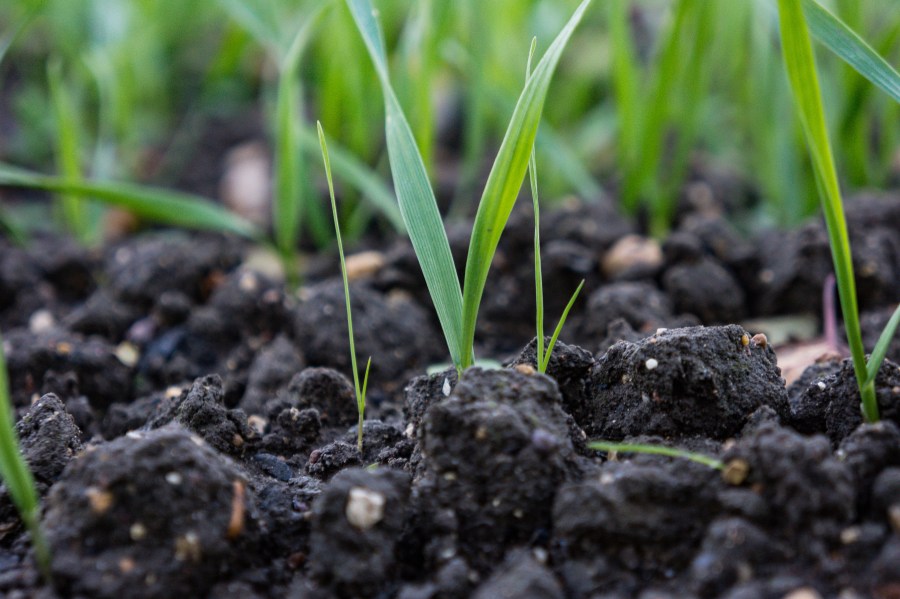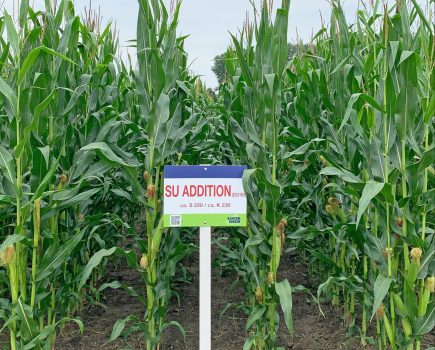A new tool is being developed to help growers to fine-tune herbicide timings this spring.
The development comes from Bayer and originated in Denmark as the Cossack Tool, created to support a product containing mesosulfuron and iodosulfuron.
Weed challenges in Denmark
“The three main problem grassweeds in Denmark are Italian ryegrass, blackgrass and vulpia (rat’s tail fescue), in that order,” says Bayer’s Soeren Lykkegaard Hansen.
The winter wheat drilling period runs from early September until mid-October. To control weeds, there’s been greater use of stale seedbeds and delayed drilling in much the same way as the UK followed by a pre-em, he says.
“A typical pre-em is prosulfocarb, diflufenican and aclonifen. We don’t have flufenacet and in general there’s a more limited range of actives available in Denmark because of quite strict regulation. In the spring we follow up with Cossack (mesosulfuron+ iodosulfuron) or sometimes pyroxsulam which requires warmer weather.
The Cossack Tool
Denmark has a long and variable spring so the optimum timing to apply Cossack can fall between late February and early April. To help farmers apply at the earliest possible opportunity, Bayer used temperature data to develop a tool which alerts farmers when growing conditions are right to spray.
“By applying early, you’re effectively increasing the AI loading compared with the mass of plant, meaning you’re more likely to reach a lethal dose, even with a degree of metabolic resistance,” says Soeren. “Two weeks can make a lot of difference to weed development, so we don’t want farmers to miss spray opportunities.
“In general, it was believed it should be warmer to apply Cossack than the data we took from trials. This is understandable, because growers want to ensure efficacy, so possibly add 1-2°C on to the label recommendations to be sure. This tool gives reassurance that they can spray earlier while preventing application when it’s unlikely to work.”
The model analyses temperature on the potential day of application, two days before and three after, suitable conditions are required on all of the days to ensure active weed growth. Results are presented using a traffic light system by postcode – dark green means good spraying conditions, light green for fair conditions and orange for unsuitable conditions.
For good conditions, average daily temperature must be above 4°C, for fair conditions slightly less. Very low temperatures stop all weed growth; if the minimum reaches -4°C or below then spraying isn’t advised until sufficient warmer weather has elapsed to restart active growth.
UK version
The tool currently being developed in the UK includes additional parameters and Bayer’s research team is testing it this spring with an aim for a 2025 launch.
“In our market research, more than half of farmers who’d tried it described it as a high value tool. We can see from visits to the website that we get more views as the weather improves. Good spray windows can be short, it pays to be ready to go at the first opportunity because as weeds grow, they get harder to control,” says Soeren.
Benefit of correct conditions
Berkshire agronomist Tony Bayliss was pleasantly surprised by post-em efficacy on blackgrass last spring but he emphasises that the right conditions are essential for it to be worth applying.
“It was a pattern of good control on several farms, even where there is some metabolic resistance. When planning last year, I questioned why we’re spending on mesosulfuron+ iodosulfuron products. But Atlantis Star in particular took me by surprise for how well it worked.
“The addition of thiencarbazone seemed to make a difference. In some cases, 80% control and the remaining 20% was struggling and remained stunted with small heads until harvest.”
Tony encourages farmers to apply as early as possible and last spring, conditions were perfect at the start of February. “The earlier you apply, the better. We applied some as early as 1 February on a clear, sunny day. I’m a big believer in high UV levels when you apply so the plant takes in a large dose rapidly. And in February, weeds are still small which also helps. If you have back-to-back bright days, then I think the efficacy goes up again,” he explains.
With early season applications, there are potential compromises. Tony suggests being pragmatic and that the leaf doesn’t have to be totally dry at the time of application, provided it’s sunny and drying.
Clear skies can also mean low night temperatures, which may deter farmers from applying. But for Tony, unless there’s a hard frost, he still recommends applying to take advantage of high UV.
“There are often days in February when it’s sunny and reaches 8, 9 or 10°C, and they often come together. If the opportunity arises with this type of weather, get on and do it.”




